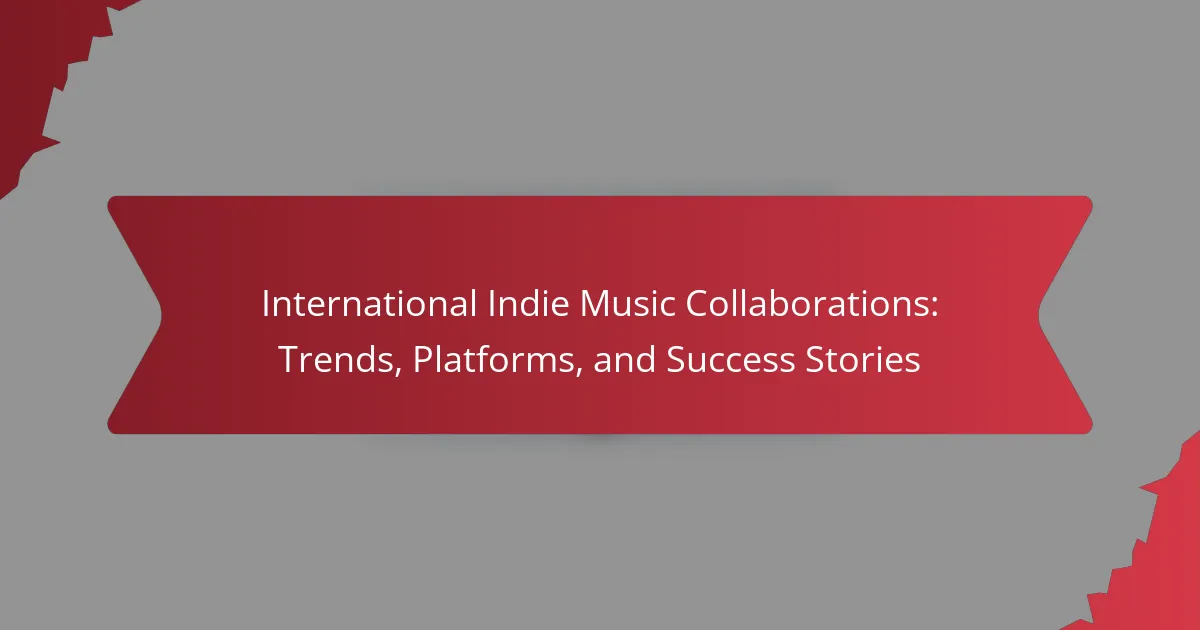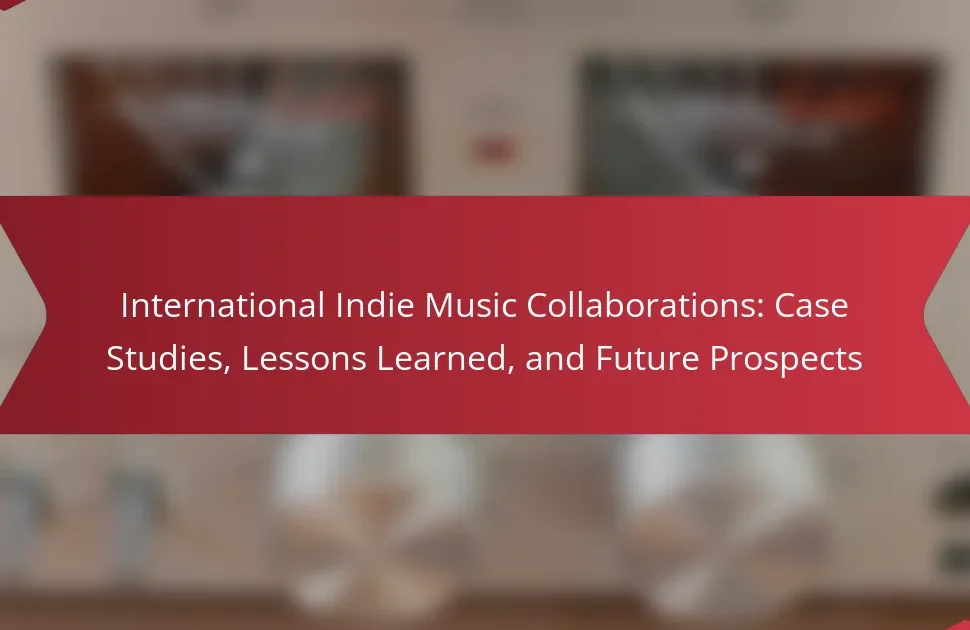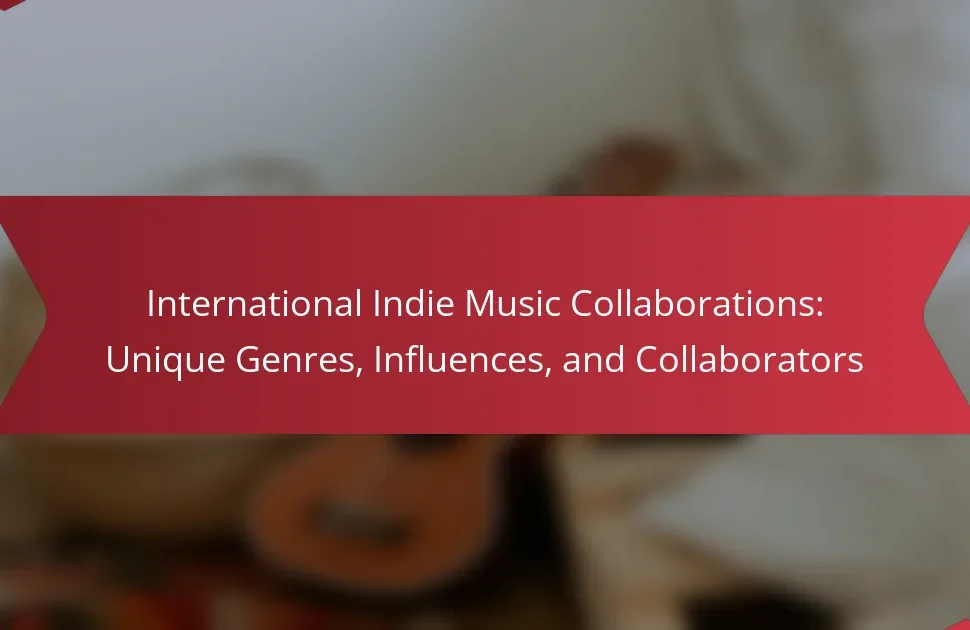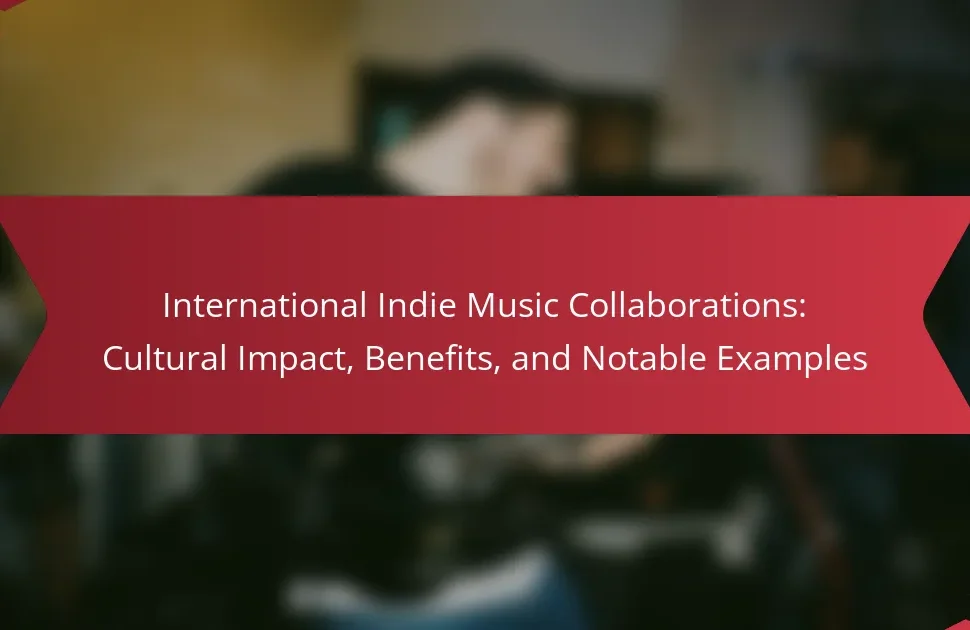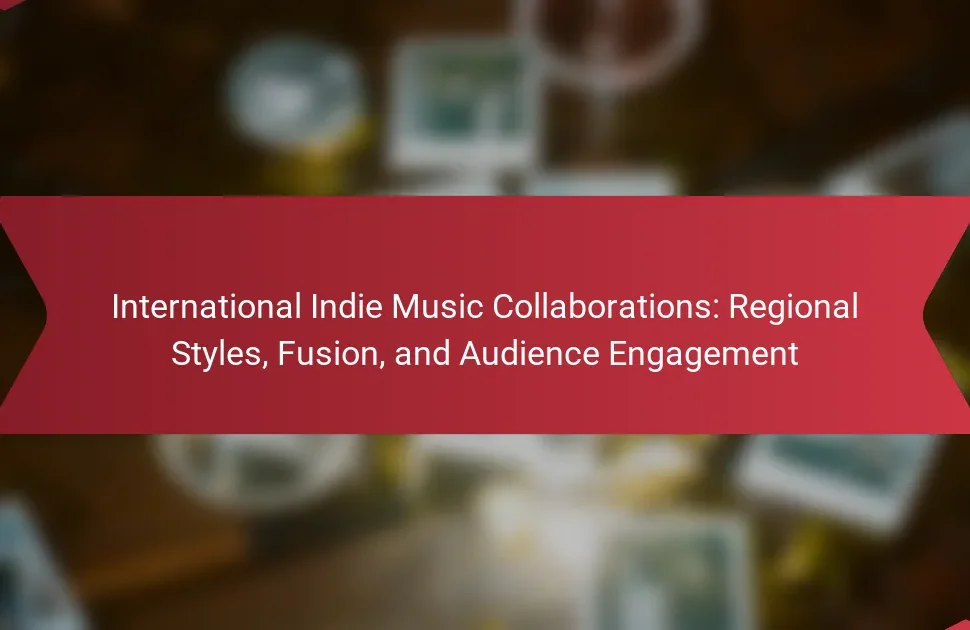International indie music collaborations are transforming the music landscape by connecting artists across borders through digital platforms. This article explores current trends in collaboration, highlights key platforms like SoundBetter and BandLab, and shares success stories that showcase the creativity and diversity of international partnerships. Additionally, it addresses the challenges artists face and offers strategies for effective collaboration in the global indie scene.
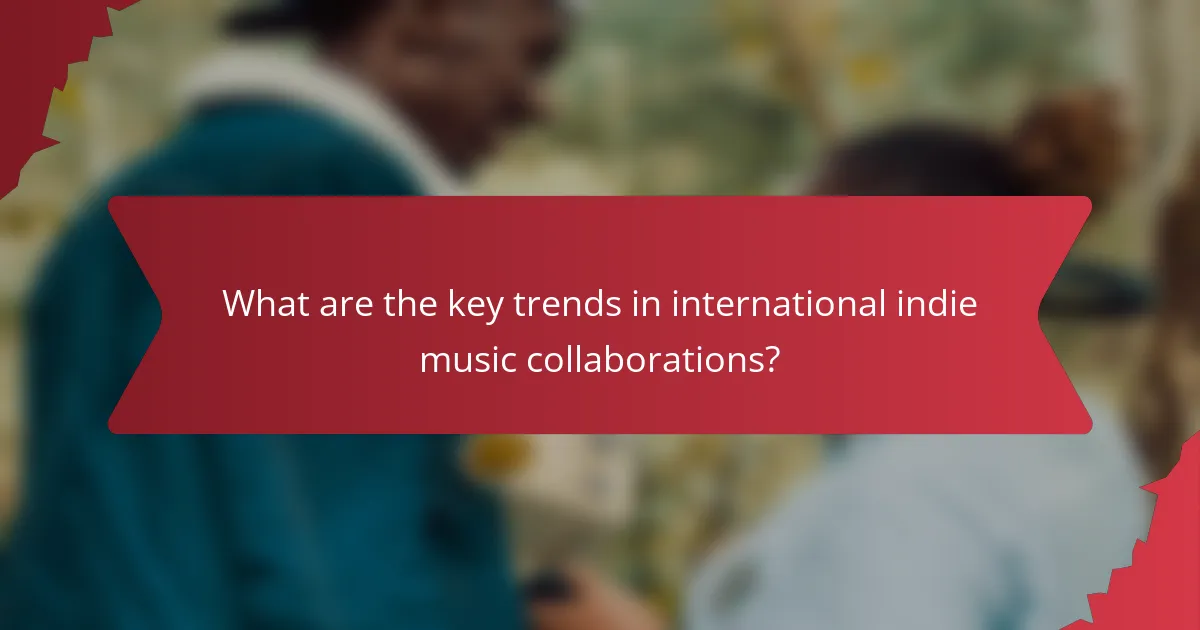
What are the key trends in international indie music collaborations?
International indie music collaborations are increasingly characterized by cross-border partnerships, digital platforms, and genre-blending. Artists leverage social media and streaming services to connect globally. Collaborative projects often feature diverse musical styles, enhancing creativity and audience reach. Success stories include notable collaborations that have led to viral hits, showcasing the power of international synergy in the indie music scene.
How has technology influenced collaboration in the indie music scene?
Technology has significantly enhanced collaboration in the indie music scene by providing accessible platforms and tools. Digital platforms like SoundCloud and Bandcamp enable artists to share and promote their work globally. Collaborative tools such as Zoom and Dropbox facilitate remote songwriting and production sessions, allowing musicians to connect across borders.
Social media has become a vital avenue for networking, enabling indie artists to discover potential collaborators and audiences. Success stories, such as the collaboration between artists from different countries, illustrate how technology fosters innovative music creation. These trends highlight the evolving landscape of international indie music collaborations, driven by technology.
Which genres are most popular for international collaborations?
The most popular genres for international collaborations in indie music include pop, electronic, hip-hop, and folk. These genres facilitate cross-cultural exchanges and attract diverse audiences. Collaborative projects often blend elements from multiple styles, creating innovative sounds. Notable success stories highlight how artists from different backgrounds leverage these genres to reach global listeners.
What role do cultural influences play in collaborative projects?
Cultural influences significantly enhance collaborative projects in international indie music by fostering creativity and diversity. Artists draw inspiration from various cultural backgrounds, leading to innovative sounds and styles. This cross-cultural exchange often results in unique music that resonates with broader audiences. Collaborative platforms, such as online music communities, facilitate these interactions, enabling artists to connect and share their cultural narratives. Success stories, like those of artists blending traditional sounds with modern genres, exemplify how cultural influences drive collaboration and appeal in the global music scene.
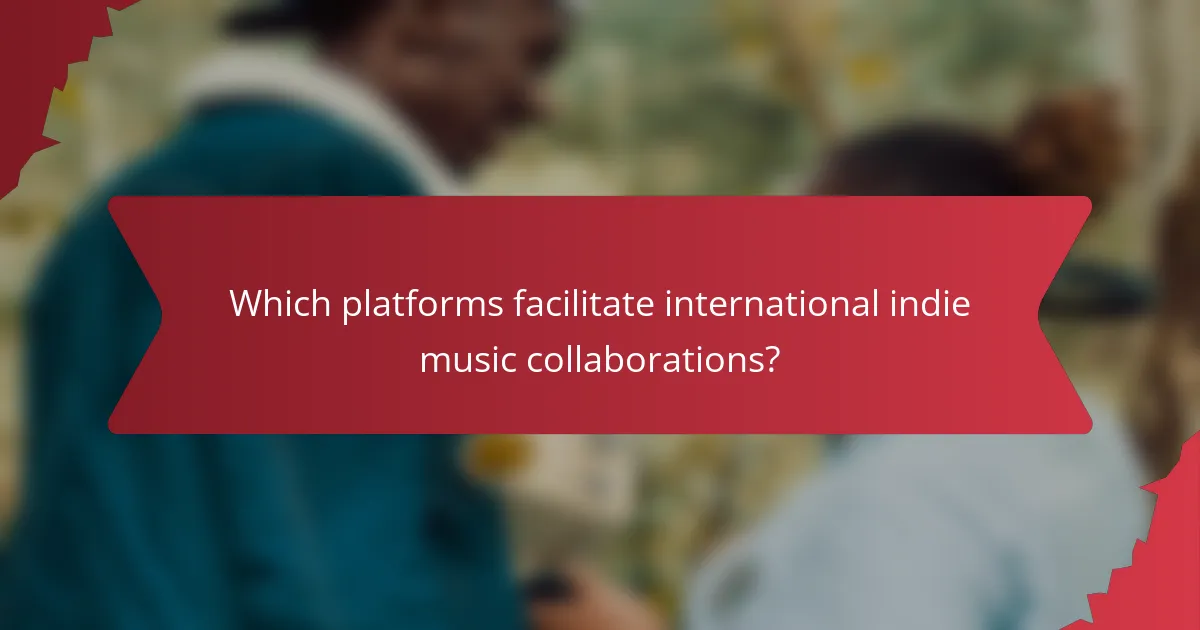
Which platforms facilitate international indie music collaborations?
Platforms facilitating international indie music collaborations include SoundBetter, Splice, BandLab, and Kompoz. These platforms connect artists globally, enabling collaboration on projects regardless of location. They offer tools for sharing music, arranging sessions, and providing feedback. Each platform has unique features, such as Splice’s sample library or BandLab’s integrated social network, enhancing collaboration opportunities.
How do social media platforms contribute to collaboration opportunities?
Social media platforms significantly enhance collaboration opportunities in the international indie music scene. They provide artists with tools to connect, share ideas, and collaborate across geographical boundaries. Platforms like Instagram, TikTok, and SoundCloud facilitate networking, allowing musicians to showcase their work and engage with potential collaborators. These interactions often lead to innovative projects that blend diverse musical styles and cultures.
Moreover, social media enables real-time communication, making it easier to coordinate joint efforts regardless of location. Artists can share progress updates, solicit feedback, and brainstorm creative concepts, which accelerates the collaboration process. The accessibility of these platforms democratizes opportunities, allowing emerging artists to find established musicians willing to collaborate.
Success stories abound, with many indie artists leveraging social media to launch successful collaborations that reach broader audiences. For instance, viral trends on TikTok have led to spontaneous partnerships, showcasing how digital platforms can create unexpected and fruitful alliances in the music industry.
What are the most effective music streaming services for indie artists?
The most effective music streaming services for indie artists include Bandcamp, SoundCloud, and Spotify. Bandcamp allows artists to sell music directly to fans, offering a higher revenue share. SoundCloud enables easy sharing and collaboration, fostering community engagement. Spotify provides extensive reach and playlist placements, enhancing visibility. Each platform supports indie artists in unique ways, catering to different needs and goals.
Which crowdfunding platforms support international music projects?
Platforms that support international music projects include Kickstarter, Indiegogo, and Patreon. These platforms have global reach and cater to diverse music genres. Kickstarter allows creators to set funding goals and offer rewards. Indiegogo offers flexible funding options, enabling projects to keep funds even if goals are not met. Patreon focuses on subscription models, allowing artists to build ongoing support from fans. These platforms foster collaboration and creativity in the international indie music scene.
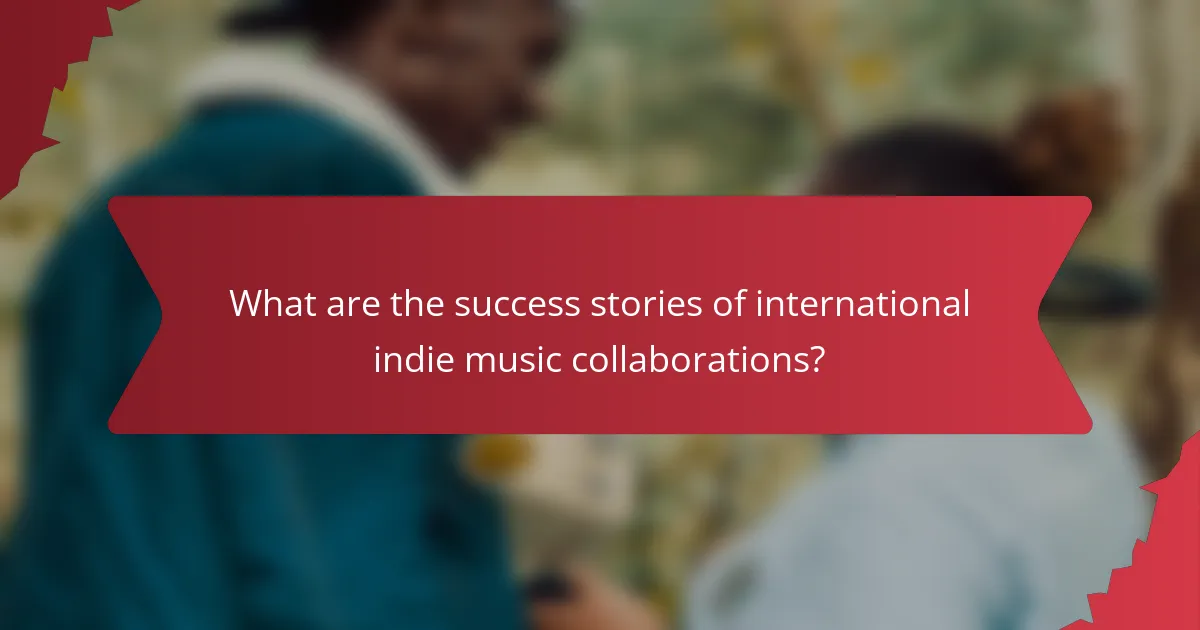
What are the success stories of international indie music collaborations?
International indie music collaborations have led to notable success stories, showcasing diverse talents and unique sounds. One example is the collaboration between Bon Iver and the Korean indie band Hyukoh, which blended folk and rock elements, gaining international acclaim. Another success is the partnership between the British band alt-J and the American rapper Twin Shadow, resulting in a fusion of genres that resonated with global audiences. Platforms like Bandcamp and SoundCloud facilitate these collaborations, allowing artists to reach wider audiences and share their music easily. The rise of social media has further amplified these success stories, enabling artists to connect and collaborate across borders.
Which notable artists have successfully collaborated across borders?
Notable artists who have successfully collaborated across borders include Billie Eilish and Rosalia, as well as Major Lazer with various international musicians. These collaborations often blend diverse musical styles and cultures, creating unique sounds that resonate globally. Platforms like Spotify and YouTube facilitate these cross-border partnerships, expanding audiences and enhancing visibility. For instance, the song “Lo Vas A Olvidar” by Eilish and Rosalia showcases how artists can merge their distinct influences to achieve critical acclaim and commercial success.
What lessons can be learned from successful collaborative projects?
Successful collaborative projects teach the importance of clear communication, mutual respect, and shared goals. These elements foster creativity and innovation. For instance, international indie music collaborations often highlight diverse musical influences, enhancing the final product. Platforms like Bandcamp and SoundCloud facilitate these partnerships, showcasing success stories that inspire new artists. As a result, understanding these dynamics can lead to more effective collaborations in the music industry.
How do these success stories vary across different regions?
Success stories in international indie music collaborations vary significantly across regions due to cultural influences and platform accessibility. In North America, collaborations often leverage streaming services like Spotify for wider reach. In Europe, festivals and local scenes play a crucial role in connecting artists. Asian markets frequently utilize social media platforms for promotion, enhancing visibility. Latin America emphasizes genre fusion, creating unique sounds that resonate locally and globally. Each region’s distinct approach shapes the success and impact of these collaborations.
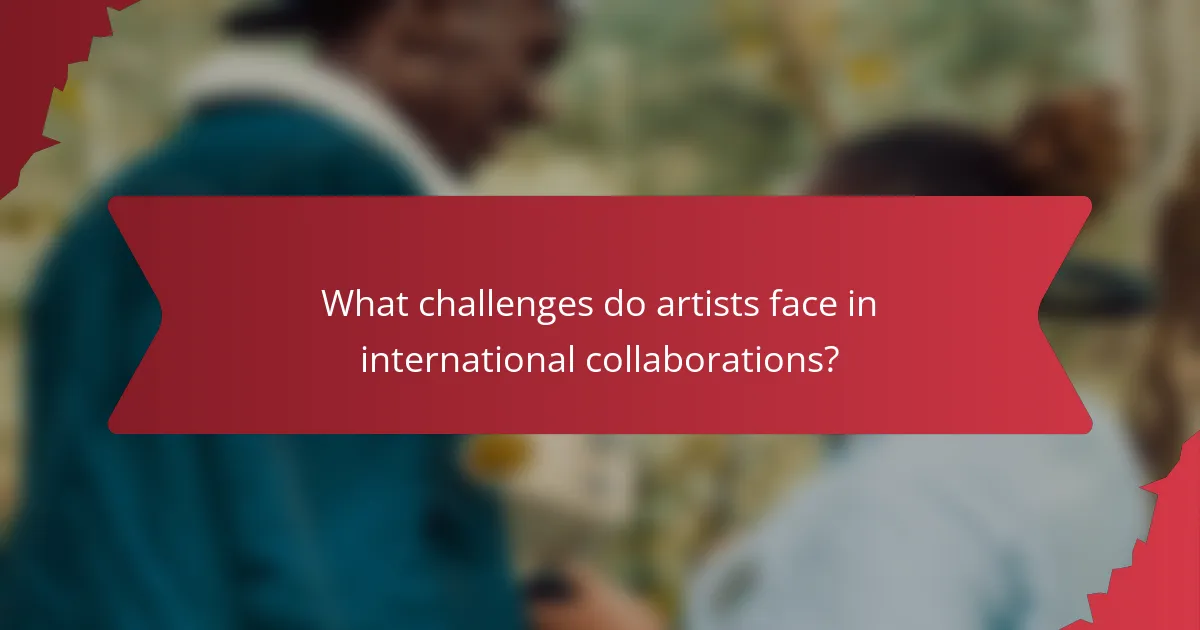
What challenges do artists face in international collaborations?
Artists face challenges in international collaborations, including cultural differences, communication barriers, and varying legal frameworks. These factors can complicate creative processes and project management. Additionally, artists often struggle with time zone discrepancies and differing industry standards, which can hinder collaboration efficiency. A lack of access to local resources may also impact the quality of the final product.
How do language barriers impact collaborative efforts?
Language barriers can significantly hinder collaborative efforts in international indie music projects. They can lead to misunderstandings and misinterpretations, affecting communication and creativity. Collaborators may struggle to convey artistic ideas effectively, limiting the potential for innovative outcomes.
Additionally, language differences can create challenges in negotiating contracts and sharing feedback. For instance, nuances in lyrics or musical concepts may be lost in translation, impacting the final product. As a result, successful collaborations often rely on the use of common languages or translation tools to bridge these gaps.
In the context of international indie music, fostering an inclusive environment that values diverse languages can enhance collaboration. Musicians who embrace multilingual communication may find richer creative exchanges, leading to unique soundscapes that resonate with broader audiences.
What are the common legal issues in cross-border music collaborations?
Common legal issues in cross-border music collaborations include copyright infringement, licensing complexities, and contract enforcement. These challenges arise due to varying laws in different jurisdictions, leading to disputes over rights and revenue sharing. Additionally, artists may face difficulties in obtaining necessary permissions for sampling or using third-party content. Understanding international treaties and local regulations is crucial for successful collaborations.
How do differing cultural expectations affect collaboration dynamics?
Differing cultural expectations significantly impact collaboration dynamics in international indie music projects. These expectations shape communication styles, decision-making processes, and conflict resolution approaches among artists from diverse backgrounds.
For instance, artists from collectivist cultures may prioritize group harmony, affecting how they share ideas and feedback. Conversely, those from individualistic cultures might emphasize personal expression and assertiveness, leading to potential misunderstandings.
Furthermore, cultural norms influence the choice of collaboration platforms. Some cultures favor informal communication tools, while others may prefer structured environments. Understanding these dynamics fosters more effective and harmonious collaborations, enhancing creativity and productivity.
Ultimately, successful international indie music collaborations require sensitivity to cultural differences, promoting an inclusive and adaptable approach that respects diverse artistic expressions.
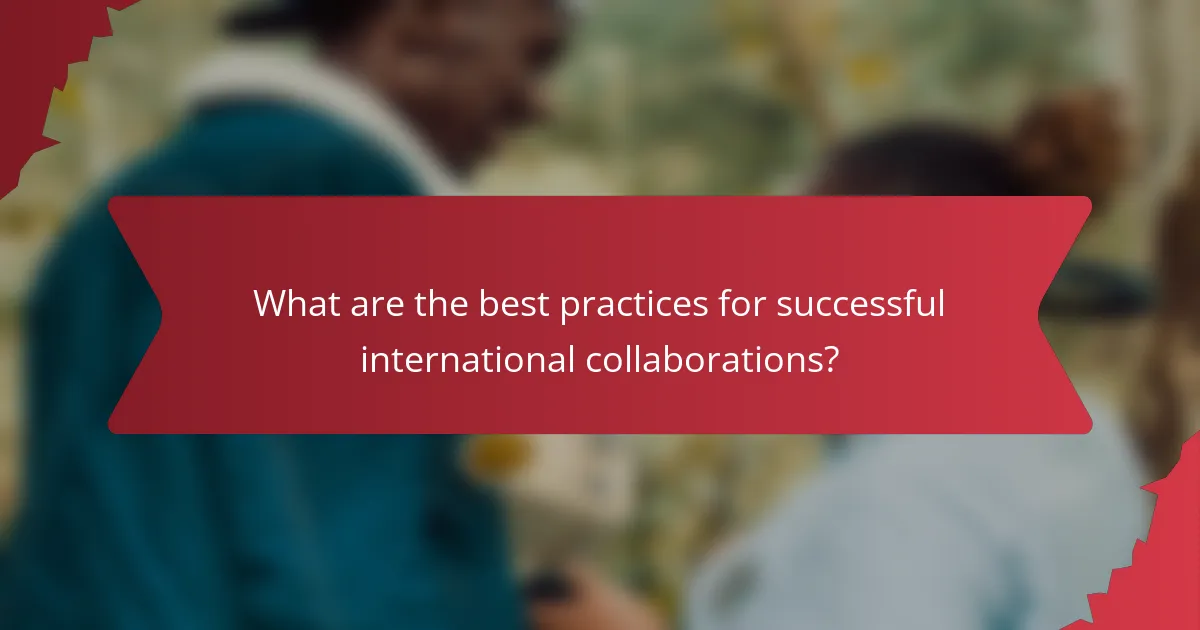
What are the best practices for successful international collaborations?
Successful international indie music collaborations require clear communication, mutual respect, and a shared vision. Establishing strong connections through social media platforms and networking events is essential.
1. Identify complementary skills and styles among collaborators.
2. Utilize platforms like SoundCloud and Bandcamp for exposure.
3. Set clear goals and timelines for the project.
4. Leverage local music scenes for authenticity and cultural relevance.
5. Share resources and knowledge to enhance creativity.
6. Celebrate diverse influences to create unique soundscapes.
How can artists effectively communicate in collaborative projects?
Artists can effectively communicate in collaborative projects by leveraging clear platforms, establishing shared goals, and maintaining open dialogue. Utilizing tools like Zoom or Slack facilitates real-time discussions. Setting specific roles enhances accountability. Regular feedback sessions ensure alignment. Celebrating milestones fosters a positive atmosphere.
Which strategies enhance creative synergy among diverse artists?
Collaborative platforms enhance creative synergy among diverse artists by fostering communication and idea exchange. Tools like Splice and SoundBetter facilitate collaboration across borders, allowing musicians to co-create in real-time. Networking events, such as music festivals, create opportunities for artists to connect and share influences. Additionally, social media serves as a powerful tool for building relationships and showcasing collaborative works, leading to innovative projects. These strategies cultivate an environment where diverse artistic expressions can flourish.
What tips can help indie artists navigate cultural differences?
Indie artists can navigate cultural differences by embracing open communication, respecting local customs, and collaborating with diverse talents. Understanding cultural nuances enhances creativity and fosters stronger partnerships. Engaging in cultural exchange programs also broadens perspectives and nurtures mutual respect.
What common mistakes should be avoided in international collaborations?
To ensure success in international indie music collaborations, avoid these common mistakes. Miscommunication can lead to misunderstandings about artistic vision and project goals. Failing to acknowledge cultural differences may result in conflicts or unintentional offense. Not utilizing the right platforms can limit exposure and collaboration opportunities. Additionally, neglecting legal considerations, such as copyright agreements, can jeopardize the project’s integrity. Lastly, underestimating the importance of networking can hinder future collaborations and growth.
